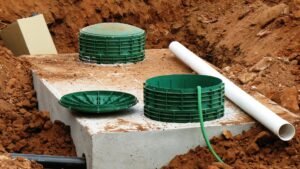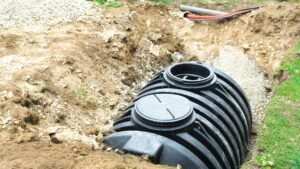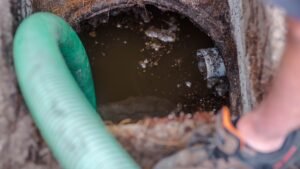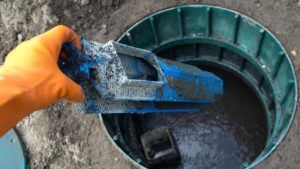Homeowners with septic systems often face expensive pumping bills every few years, but there are effective ways to maintain and clean your septic tank without calling the professionals. This guide is for DIY-minded property owners who want to learn how to clean septic tank without pumping and keep their system running smoothly between service calls.
We’ll walk you through natural enzyme treatment methods that break down waste naturally, helping you understand how to empty septic tank yourself naturally using biological processes. You’ll also discover practical maintenance practices that extend your tank’s life and reduce the frequency of professional cleanings. Finally, we’ll cover water conservation strategies that prevent your system from getting overloaded in the first place.
With the right approach and regular care, you can significantly reduce your septic maintenance costs while keeping your system healthy and functional.
Understanding Your Septic System Before Cleaning
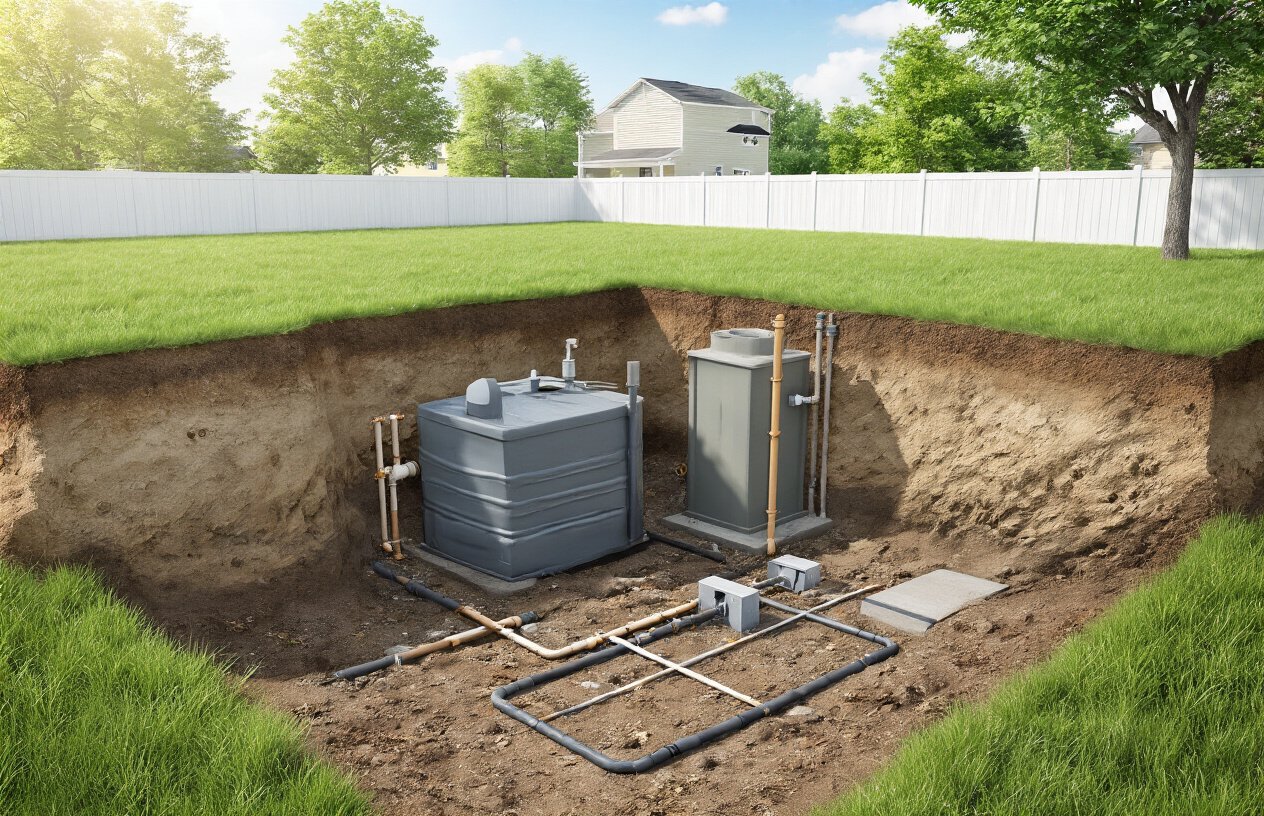
Identify septic tank components and their functions
Your septic system has three main zones that work together like a well-choreographed dance. The first layer, called scum, floats at the top and contains oils, grease, and lighter debris. Below that sits the middle layer – the effluent zone – where clear liquid waits to flow into your drain field. At the bottom, you’ll find the sludge layer where heavier solids settle and decompose over time.
The inlet pipe brings wastewater from your home into the tank, while the outlet pipe sends partially treated water to the drain field for final filtration. Baffles at both ends prevent scum and solids from escaping the tank. These components create a natural treatment process where bacteria break down organic matter without any pumps or electricity.
Understanding how to clean septic tank systems starts with knowing these layers. When you’re figuring out how to empty septic tank naturally, you’re actually working with these bacterial processes rather than against them.
Recognize warning signs that indicate cleaning is needed
Several red flags signal your tank needs attention before you consider how to empty septic tank yourself. Slow drains throughout your home often indicate the first stage of trouble. Water backing up in sinks, showers, or toilets suggests the tank is reaching capacity.
Strong sewage odors around your tank or drain field area mean gases aren’t properly contained. Lush, green grass over your septic area might seem positive, but it actually indicates nutrient-rich effluent is surfacing. Pooling water or wet spots in your yard signal system failure.
| Warning Sign | Severity Level | Action Needed |
|---|---|---|
| Slow drains | Moderate | Begin maintenance routine |
| Sewage odors | High | Immediate cleaning required |
| Pooling water | Critical | Professional assessment needed |
| Gurgling sounds | Low-Moderate | Monitor and maintain |
Determine your tank size and capacity
Tank sizes typically range from 750 to 1,500 gallons for residential properties. A family of four usually needs a 1,000-gallon tank minimum. Check your original building permits or contact your local health department for tank specifications if you don’t have records.
Measure your tank’s length, width, and depth to calculate capacity if records aren’t available. Most rectangular tanks use the formula: length × width × depth × 7.48 = gallons. Round tanks require: π × radius² × depth × 7.48 = gallons.
Knowing your capacity helps determine cleaning frequency and which methods work best when learning how to clean septic tank without pumping. Smaller tanks need more frequent attention than larger ones.
Assess current sludge and scum levels
Regular level checks prevent costly problems and help you master how to empty septic tank without pumping. Use a long stick or septic tank measuring device to check layers. Insert the stick until it hits the tank bottom, then slowly pull it up to see the different layer markings.
Healthy tanks maintain roughly 25% sludge and 25% scum, leaving 50% for the effluent zone. When sludge and scum combined exceed 50% of your tank capacity, cleaning becomes necessary. Professional pumping typically occurs when these levels reach 30-35% each.
For DIY maintenance, monitor these levels monthly. Create a simple log noting dates and measurements. This tracking helps you understand your system’s patterns and optimize natural cleaning methods like enzyme treatments that work with your tank’s bacterial ecosystem.
Essential Tools and Materials for DIY Septic Cleaning
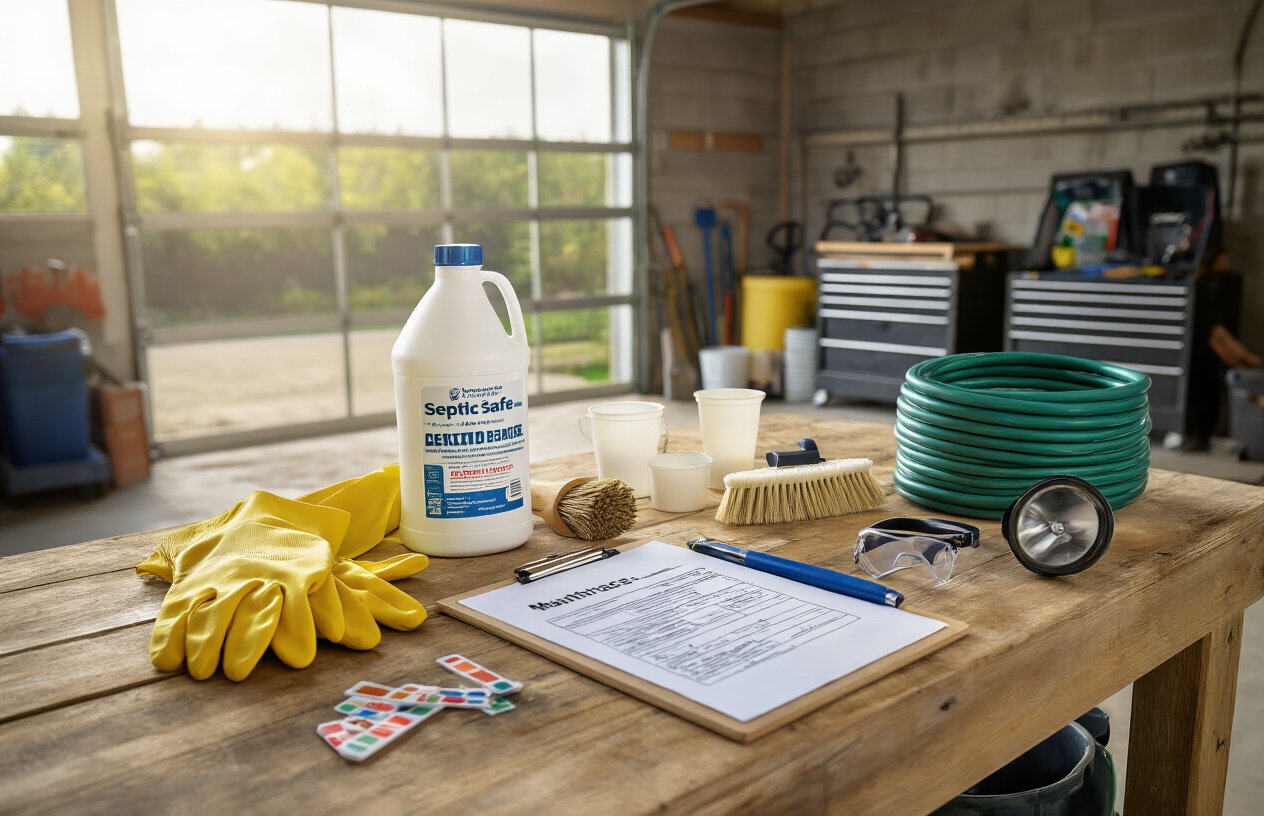
Gather necessary safety equipment and protective gear
Before you start learning how to clean septic tank without pumping, your safety comes first. Working with septic systems exposes you to harmful gases and bacteria that can cause serious health problems.
Start with a high-quality respirator mask – not just any face covering, but one specifically designed for sewer gases. N95 masks won’t cut it here. You need protection against hydrogen sulfide and methane gases that build up in septic tanks. Chemical-resistant gloves are non-negotiable, preferably nitrile or neoprene that extend up to your elbows.
Safety glasses or goggles protect your eyes from splashing wastewater and chemical cleaners. Choose wraparound styles that seal completely around your eyes. Disposable coveralls or old clothes you can throw away afterward prevent contamination of your regular clothing.
Keep a portable gas detector handy to monitor dangerous gas levels before opening any septic access points. These devices alert you to potentially lethal concentrations of methane or hydrogen sulfide. A sturdy flashlight with extra batteries helps you see into dark septic components safely.
Emergency equipment should include a first aid kit, clean water for washing, and someone who knows where you are while working. Never work alone on septic systems – having a buddy system could save your life if something goes wrong.
Source specialized septic cleaning products and enzymes
Natural enzyme treatments offer the most effective way to clean septic tank filter and break down waste without harsh chemicals. Bacterial additives containing live enzymes digest organic matter, oils, and grease that accumulate in your system.
Look for enzyme products specifically formulated for septic systems, not general drain cleaners. These products contain beneficial bacteria strains like Bacillus and Pseudomonas that thrive in septic environments. Monthly enzyme treatments help maintain proper bacterial balance and prevent system backups.
Septic-safe toilet paper and household cleaners prevent harmful chemicals from killing beneficial bacteria. Avoid products containing bleach, antibacterial agents, or phosphates that disrupt the natural biological processes in your tank.
Yeast can serve as a budget-friendly enzyme booster when learning how to empty septic tank yourself naturally. Add one cup of active dry yeast monthly to introduce additional beneficial microorganisms. Baking soda helps neutralize pH levels and reduce odors without harming septic bacteria.
| Product Type | Purpose | Application Frequency |
|---|---|---|
| Bacterial enzymes | Break down organic waste | Monthly |
| Septic-safe cleaners | Daily cleaning without harm | As needed |
| Yeast additives | Natural bacterial boost | Monthly |
| pH neutralizers | Balance acidity levels | Bi-monthly |
Obtain proper measurement and inspection tools
Accurate measurement tools help you monitor your septic system’s health and determine when intervention is needed. A septic tank measuring stick or probe allows you to check sludge and scum layer depths without professional equipment.
Digital pH test strips monitor the acidity levels in your septic tank. Healthy septic systems maintain pH levels between 6.8 and 7.2. Regular testing helps you catch problems before they require expensive pumping services.
A septic tank locator or metal detector helps you find buried access lids and distribution boxes. Many homeowners don’t know exactly where their septic components are located, making maintenance impossible.
Inspection mirrors on telescoping handles let you examine hard-to-reach areas inside septic tanks and inspection ports. LED lights attached to flexible cables illuminate dark spaces for thorough visual inspections.
Water level indicators show you how much liquid is in different compartments of your septic system. Rising water levels often indicate clogs or failures that need immediate attention.
Basic plumbing tools like pipe snakes, plungers designed for septic systems, and adjustable wrenches handle minor repairs and maintenance tasks. Keep septic system diagrams and maintenance logs to track your cleaning efforts and identify patterns in system performance.
Natural Enzyme Treatment Methods

Choose the right bacterial additives for your system
Picking the right bacterial additives makes all the difference when you’re trying to clean your septic tank without pumping. Look for products containing aerobic and anaerobic bacteria strains specifically designed for septic systems. The best additives include Bacillus species, which excel at breaking down organic waste, and cellulase enzymes that tackle paper products and food scraps.
Avoid harsh chemical cleaners that kill beneficial bacteria. Instead, choose enzyme-based products with live bacterial cultures. Powder forms typically contain more active bacteria than liquid versions, though both work effectively when applied correctly. Check the bacterial count on labels – quality products contain at least 100 million bacteria per gram.
Popular bacterial strains to look for include:
- Bacillus subtilis – breaks down proteins and starches
- Bacillus licheniformis – digests fats and grease
- Saccharomyces cerevisiae – processes sugars and carbohydrates
Apply enzyme treatments at optimal timing intervals
Timing your enzyme treatments correctly maximizes their effectiveness. Apply bacterial additives monthly during normal conditions, or bi-weekly if your system handles heavy loads. The best time is late evening when water usage drops, allowing bacteria to settle and colonize without being flushed away.
Start treatments during warm months when bacterial activity peaks. Cold weather slows bacterial growth, so increase application frequency during winter months. After heavy usage periods like holidays or gatherings, add extra treatments to restore bacterial balance.
For new systems or after antibiotic use in the household, apply treatments weekly for the first month to establish robust bacterial colonies. Space applications 3-4 days apart to prevent overwhelming the system while building up beneficial microorganism populations.
Monitor bacterial colony growth and effectiveness
Track your bacterial treatment success through simple observation methods. Healthy bacterial colonies produce fewer odors and reduce scum layer thickness. Check for proper waste breakdown by observing toilet paper dissolution rates and monitoring grease trap efficiency.
Visual indicators of successful bacterial colonization include:
- Clear, odorless effluent
- Reduced surface scum buildup
- Faster waste decomposition
- Minimal backup issues
Test pH levels monthly using simple test strips. Healthy bacterial colonies maintain pH between 6.5-7.5. Document changes in system performance, noting improvements in drainage speed and reduction in surface waste accumulation.
Maintain proper pH levels for bacterial survival
Bacterial colonies thrive in neutral pH conditions. Test your septic tank pH monthly and adjust when levels fall outside the 6.5-7.5 range. Low pH kills beneficial bacteria, while high pH slows decomposition processes.
Common pH problems stem from excessive use of household cleaners, antibiotics, or food waste disposal. Combat low pH by reducing harsh chemical inputs and adding lime-based pH adjusters specifically designed for septic systems.
Natural pH balancing methods include:
- Adding baking soda sparingly (1/4 cup monthly)
- Using septic-safe cleaning products
- Limiting garbage disposal use
- Installing water softener bypass for septic lines
Regular pH monitoring prevents bacterial die-offs that lead to system failures. Keep pH test strips handy and check levels whenever you notice odors or slow drainage, as these often indicate bacterial colony stress from pH imbalances.
Water Conservation Strategies to Reduce Tank Load
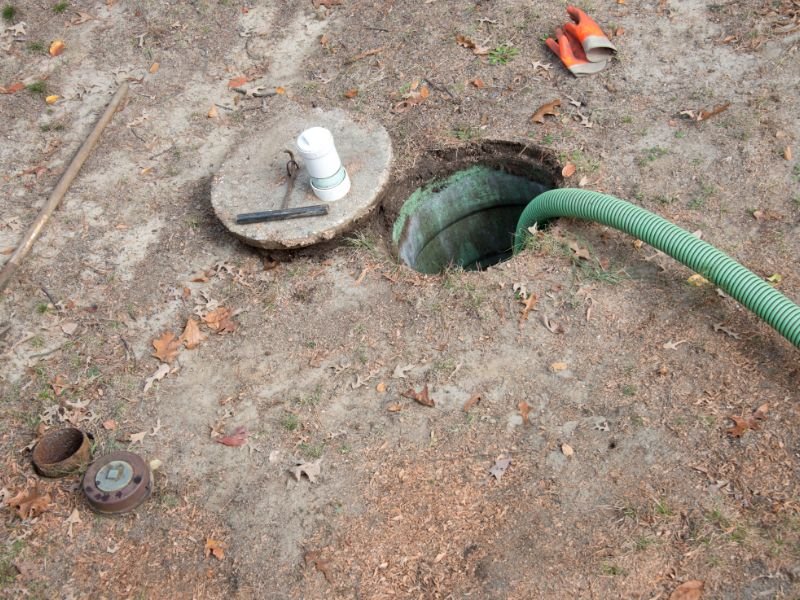
Implement household water usage reduction techniques
Simple daily habits make a huge difference in keeping your septic tank from becoming overloaded. Start by turning off the tap while brushing teeth or shaving – this alone saves 2-3 gallons per person daily. Take shorter showers and consider installing a shower timer to keep track. Repair leaky faucets and toilets immediately, as even small drips add hundreds of gallons monthly to your septic load.
Replace older toilets with low-flow models that use 1.28 gallons per flush instead of 3.5 gallons. Check toilet flapper seals regularly to prevent silent leaks that can waste thousands of gallons without detection. When washing dishes by hand, fill one sink with soapy water and another with rinse water rather than running water continuously.
Stagger laundry and dishwashing schedules
Your septic system needs time to process wastewater between heavy usage periods. Spread laundry loads throughout the week instead of doing multiple loads in one day. Wait at least 2-3 hours between loads to allow the system to handle the volume properly.
Run dishwashers and washing machines during off-peak water usage times, like early morning or late evening. This prevents overwhelming your septic tank when other family members are showering or using water for cooking. Create a simple schedule where different family members do laundry on assigned days, distributing the load evenly across the week.
Install water-efficient fixtures and appliances
Modern water-efficient appliances dramatically reduce the strain on your septic system. High-efficiency washing machines use 40% less water than standard models while still providing excellent cleaning performance. Look for ENERGY STAR certified dishwashers that use as little as 3 gallons per cycle compared to older models using 10+ gallons.
Install low-flow showerheads that deliver satisfying pressure while using only 1.5-2.0 gallons per minute. Aerators on faucets reduce flow rates without sacrificing functionality. These upgrades pay for themselves through reduced water bills while extending the time between septic tank cleanings.
Redirect excess water sources away from the system
Divert roof gutters, basement sump pumps, and foundation drains away from your septic system’s drain field. Excess water from these sources can flood your system, preventing proper waste breakdown and potentially causing backups.
Install French drains or dry wells to handle storm water runoff. Redirect washing machine discharge to a separate gray water system for garden irrigation if local codes permit. Grade your landscaping to channel surface water away from the septic area, preventing oversaturation that interferes with natural filtration processes.
Maintenance Practices That Extend Tank Life

Establish Regular Inspection and Monitoring Routines
Schedule monthly visual inspections of your septic system components to catch problems before they become expensive repairs. Walk around your tank area and drainfield looking for warning signs like soggy soil, foul odors, or standing water. These red flags often indicate your system needs attention before you reach the point of needing to empty your septic tank through professional pumping.
Check your septic tank filter every 3-6 months if your system has one. Learning how to clean septic tank filter yourself saves money and prevents backups. Remove the filter carefully, rinse it with a garden hose, and replace it promptly. A clean filter reduces the load on your entire system and helps you avoid the need to empty your septic tank as frequently.
Monitor your household’s water usage patterns and watch for sudden increases that might overload the system. Keep a simple log of inspection dates and any issues you notice. This documentation helps track your system’s health over time and can guide your maintenance decisions.
Test your tank’s sludge levels annually using a homemade sludge judge – a long pole with measurement marks. Insert it through the access port until you feel resistance, then check the accumulated sludge depth. When sludge reaches one-third of your tank’s depth, you’ll need to address it through natural cleaning methods or professional pumping.
Practice Proper Waste Disposal Habits
Never flush anything beyond human waste and toilet paper down your toilets. Items like feminine products, diapers, cigarettes, medications, and cat litter disrupt the bacterial balance your septic system depends on for breaking down waste naturally. Even “flushable” wipes don’t decompose quickly enough for septic systems.
Limit your use of harsh chemicals, bleach, and antibacterial products that kill beneficial bacteria in your tank. These bacteria are essential for breaking down solids naturally, reducing your need to empty your septic tank yourself through mechanical means. Switch to septic-safe cleaning products and use them sparingly.
Avoid pouring grease, oils, or food scraps down kitchen drains. These materials float on top of your tank’s liquid, creating a thick scum layer that can clog your system’s outlet. Install a grease trap under your kitchen sink and scrape plates thoroughly before washing dishes.
Be mindful of garbage disposal use. Food waste adds unnecessary solids to your tank and increases the frequency you’ll need to empty your septic tank. Compost food scraps instead of grinding them up and sending them to your septic system.
Protect Your Drainfield from Damage and Overuse
Keep vehicles, heavy equipment, and structures off your drainfield area. The weight compacts soil and can crush the perforated pipes that distribute effluent underground. This damage forces your system to work harder and may require you to empty your septic tank more often to compensate for poor drainage.
Plant only grass over your drainfield. Trees and shrubs with aggressive root systems can invade and damage your pipes, leading to expensive repairs. Shallow-rooted grass helps prevent soil erosion while allowing proper water evaporation from the drainfield.
Direct surface water away from your drainfield using proper landscaping and gutter systems. Excess water from rain or irrigation can saturate the soil, preventing your septic effluent from properly filtering through the ground. This saturation can cause backups and force untreated wastewater to surface.
Spread out water usage throughout the week rather than doing all laundry in one day. Large volumes of water can overwhelm your drainfield’s capacity to absorb and filter wastewater. This practice helps you avoid situations where you might need to learn how to empty your septic tank yourself as an emergency measure.
Troubleshooting Common Issues Without Professional Pumping

Address Slow Draining and Backup Problems
When your septic system starts backing up or draining slowly, you can tackle these issues without immediately calling for professional pumping. Start by checking if the problem stems from excessive water usage overwhelming your system. Spread out laundry loads over several days instead of doing everything at once, and fix any leaky faucets or running toilets that constantly add water to your tank.
The septic tank filter often causes slow drainage when it becomes clogged with debris. Learning how to clean septic tank filter properly can solve many backup issues. Locate the filter in your tank’s outlet baffle, carefully remove it, and rinse with clean water using a garden hose. Never use soap or chemicals during this process, as they can harm the beneficial bacteria in your system.
If backups persist, inspect your household drains for clogs that might be forcing wastewater back into the system. Use a plumber’s snake or natural drain cleaners like baking soda and vinegar to clear minor blockages. Avoid chemical drain cleaners, which can kill the beneficial bacteria essential for breaking down waste in your septic tank.
Check your tank’s water level through the inspection port. If water levels appear extremely high, reduce household water usage for several days to allow the system to catch up. Sometimes patience and water conservation can resolve backup issues more effectively than immediate pumping.
Eliminate Foul Odors Using Natural Solutions
Septic odors usually indicate an imbalance in your system’s bacterial ecosystem or ventilation problems. Before considering pumping, try these natural solutions to restore proper function and eliminate unpleasant smells.
Bacterial imbalances often occur when harsh chemicals kill beneficial microorganisms in your tank. Stop using antibacterial soaps, bleach-based cleaners, and chemical drain products immediately. Replace them with septic-safe alternatives like white vinegar, baking soda, and enzyme-based cleaners.
Add beneficial bacteria back into your system using natural methods. Flush active dry yeast down your toilet once monthly – use about one cup mixed with warm water. The yeast helps restore bacterial populations that break down waste and reduce odors. Some homeowners find success with buttermilk or yogurt, though yeast remains the most reliable option.
Check your septic system’s ventilation. Blocked or damaged vent pipes prevent proper air circulation, causing odors to escape through drains instead of venting outside. Clear any debris from roof vents and ensure they remain unobstructed by snow, leaves, or bird nests.
Ground-level odors around your drain field might indicate oversaturation. Reduce water usage temporarily and avoid walking or parking on the drain field area. Installing a small fan near problematic areas can help disperse odors while your system recovers its balance.
Clear Minor Blockages in Distribution Boxes
Distribution boxes direct effluent from your septic tank to various sections of your drain field. When these become clogged, certain areas of your system may fail while others work overtime. You can address minor blockages yourself with the right approach.
First, locate your distribution box using your septic system diagram or by following the main outlet pipe from your tank. The box typically sits between the tank and drain field, usually 6-12 inches underground. Carefully excavate around the box, taking care not to damage pipes or the box itself.
Remove the distribution box cover and inspect the interior for obvious blockages. Common culprits include accumulated sludge, grease buildup, or small debris that’s traveled from the main tank. Use a small shovel or garden trowel to remove solid debris, but avoid disturbing the pipes themselves.
Check that effluent flows equally to all outlet pipes. If some pipes receive more flow than others, gently adjust the distribution box’s internal mechanisms or clear partial blockages in specific outlets. Sometimes simply removing accumulated debris restores proper distribution without any complex repairs.
After clearing blockages, monitor the system for several days to ensure proper flow distribution. If problems persist or if you discover damaged pipes or severe blockages, professional intervention might be necessary, but many minor distribution issues respond well to careful DIY maintenance.
Restore Proper Flow to Drainage Fields
Drainage field problems often masquerade as septic tank issues, leading homeowners to consider unnecessary pumping. Many flow problems in drain fields can be resolved through targeted maintenance and system adjustments.
Compacted soil around your drain field prevents proper effluent absorption and can cause backups throughout your system. Avoid driving or parking on drain field areas, and keep heavy equipment away from these zones. If compaction has already occurred, carefully aerate the soil using a garden fork, creating small holes to improve drainage without damaging underground pipes.
Excessive organic matter on your drain field surface can create an impermeable layer that blocks proper drainage. Remove thick grass clippings, fallen leaves, and other organic debris from the area. Plant appropriate ground cover that won’t interfere with soil absorption – shallow-rooted grasses work best.
Tree and shrub roots commonly infiltrate drain field pipes, gradually reducing flow capacity. If you notice slow drainage accompanied by lush plant growth over specific drain field sections, root intrusion might be the culprit. Remove problematic vegetation and consider installing root barriers to prevent future infiltration.
Monitor your drain field for standing water or unusually green, fast-growing grass patches. These signs indicate oversaturation or uneven distribution. Reducing household water usage temporarily allows oversaturated areas to dry out and resume normal function. Sometimes this simple adjustment restores proper drainage field operation without any mechanical intervention.
Conclusion
Your septic tank doesn’t always need professional pumping to stay clean and functional. By using natural enzyme treatments, watching your water usage, and sticking to regular maintenance routines, you can keep your system running smoothly for years. Simple practices like avoiding harsh chemicals, spreading out laundry loads, and adding beneficial bacteria can make a huge difference in how well your tank performs.
Taking care of your septic system yourself saves money and gives you better control over your home’s wastewater management. Start with the enzyme treatments and water conservation tips we’ve covered, and make septic maintenance part of your regular home care routine. Your tank will thank you with fewer problems, longer life, and peace of mind knowing you’re handling things the natural way.

